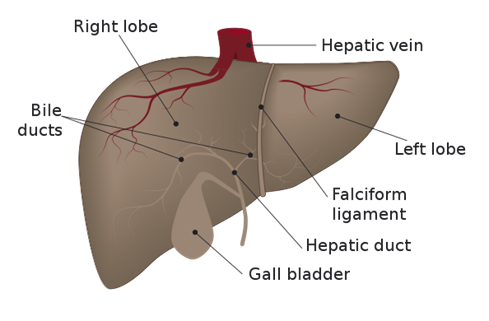
PUMPA - SMART LEARNING
எங்கள் ஆசிரியர்களுடன் 1-ஆன்-1 ஆலோசனை நேரத்தைப் பெறுங்கள். டாப்பர் ஆவதற்கு நாங்கள் பயிற்சி அளிப்போம்
Book Free DemoLet us discuss the digestive glands present in human being. They include the salivary glands, gastric glands, liver, pancreas and intestinal glands.
1. Salivary glands
Salivary glands discharge their secretion into the buccal cavity. There are three pairs of salivary glands:
a. Parotid glands - largest salivary glands situated near the ears.
b. Sublingual glands - smallest salivary glands located beneath the tongue. Their ducts are called sublingual ducts that open into the floor of the buccal cavity.
c. Submandibular glands - It is also called submaxillary glands. They are medium-sized salivary glands located at the lower jaw. The ducts of the submandibular glands are called the Wharton's duct.
Parotid salivary glands secrete most of the amylase or salivary amylase (ptyalin). In addition, sub-lingual and submandibular salivary glands secrete salivary amylase and mucus.
The fluids secreted by the salivary glands comprise saliva. It is slightly acidic with a pH of 6.8. Saliva is a mixture of water, electrolytes, mucus, serous fluids, salivary amylase and lysozyme (antibacterial agent). amylase breaks down the starch into maltose.

Types of salivary glands
2. Gastric glands
The epithelium of the stomach forms gastric glands. There are three major types of gastric glands. These include:
a. Chief cells or peptic cells: They are also called zymogenic cells. They secrete gastric digestive enzymes called proenzymes or zymogens, pepsinogen and prorenin. They also secrete small amounts of gastric amylase and gastric lipase.
b. Oxyntic cells or parietal cells: They are large and numerous. Oxyntic cells secrete HCl.
c. Mucous cells or goblet cells: They present throughout the epithelium. They secrete gastric juice, which is composed of proenzymes - pepsinogen (propepsin) and prorenin. They also secrete enzymes gastric lipase and gastric amylase, mucus and HCl.

Types of gastric glands
3. Liver
The liver is the largest gland of the body. It lies in the abdominal cavity on the right side, just below the diaphragm. The liver can be divided into two lobes:
- Left lobe
- Right lobe
The liver contains fat storage cells. The liver cells called hepatocytes secrete bile. The liver also plays a role in deamination, excretion, glycogenolysis, gluconeogenesis and detoxification. It also secretes heparin which is an anticoagulant.
The gall bladder is a pear-shaped sac-like structure that is attached to the posterior surface of the liver by connective tissue. The bile secreted by the liver is stored in the gall bladder.
Bile is a greenish mixture consisting of bile salts, bile pigments, phospholipids, bilirubin, electrolytes and water. Bile salts help digest fats in the small intestine by the emulsification (large fat droplets are broken down into smaller globules) of fats.
Functions of Bile
1. Bile neutralizes HCl of the chyme.
2. Bile absorbs fat and fat-soluble vitamins.
3. Bile activates the enzyme lipase.
4. Bile increases the peristalsis of the intestine.

Liver
4. Pancreas
The pancreas is a lobulated, greyish-pink gland located posterior to the stomach in the abdominal cavity. The pancreas has two parts:
1. Exocrine part - Secretes pancreatic juice, which is alkaline and has a pH of 8.4. Pancreatic juice contains proenzymes - trypsinogen, chymotrypsinogen and procarboxypeptidase, and the enzyme pancreatic lipase. Pancreatic juice aids in the digestion of proteins, starch, fats and nucleic acids.
2. Endocrine part - Consists of groups of islets of Langerhans. It consists of alpha () cells, beta () cells and delta () cells.
The pancreas plays both endocrine and exocrine functions in our body and known as a heterocrine organ.

Pancreas
5. Intestinal glands
Intestinal glands are formed by the surface epithelium of the small intestine. The glands secrete digestive enzymes and mucus. Mucus protects the walls of the duodenum. Digestion of most of the nutrients takes place.
Intestinal glands secrete intestinal juice with a pH of 7.8, which contains enzymes - maltase, sucrase, lactase, aminopeptidase, dipeptidases, nucleotidases, nucleosidases and intestinal lipase. Digestion of foods is completed in the small intestine.

Intestinal glands of the large intestine and small intestine
Reference:
https://commons.wikimedia.org/wiki/File:Blausen_0780_SalivaryGlands.png
https://commons.wikimedia.org/wiki/File:Gastric_gland.png
https://commons.wikimedia.org/wiki/File:Liver_Diagram.svg
https://commons.wikimedia.org/wiki/File:1820_The_Pancreas.jpg
https://commons.wikimedia.org/wiki/File:Villi_%26_microvilli_of_small_intestine.svg
https://commons.wikimedia.org/wiki/File:2421_Histology_of_the_Large_IntestineN.jpg